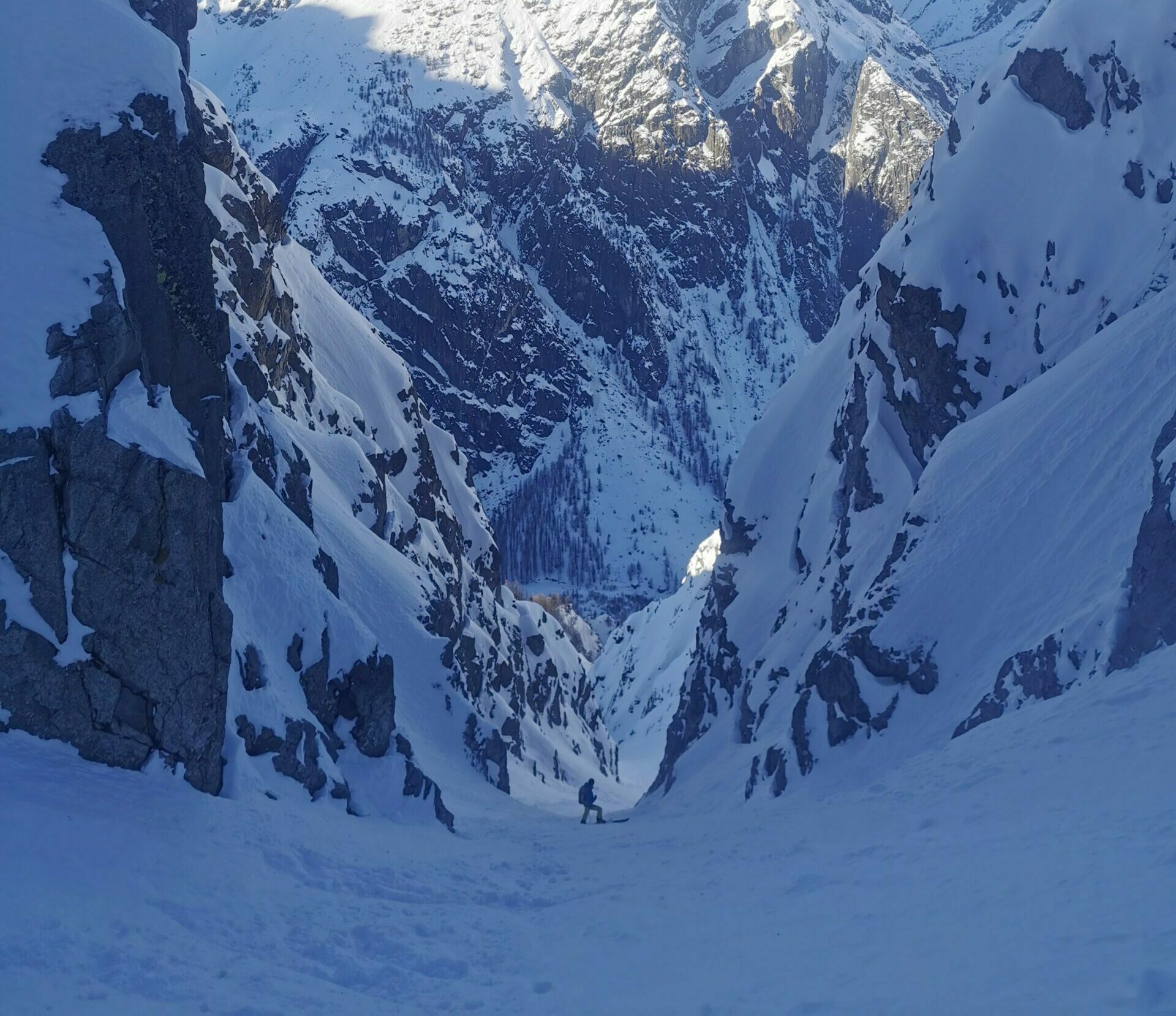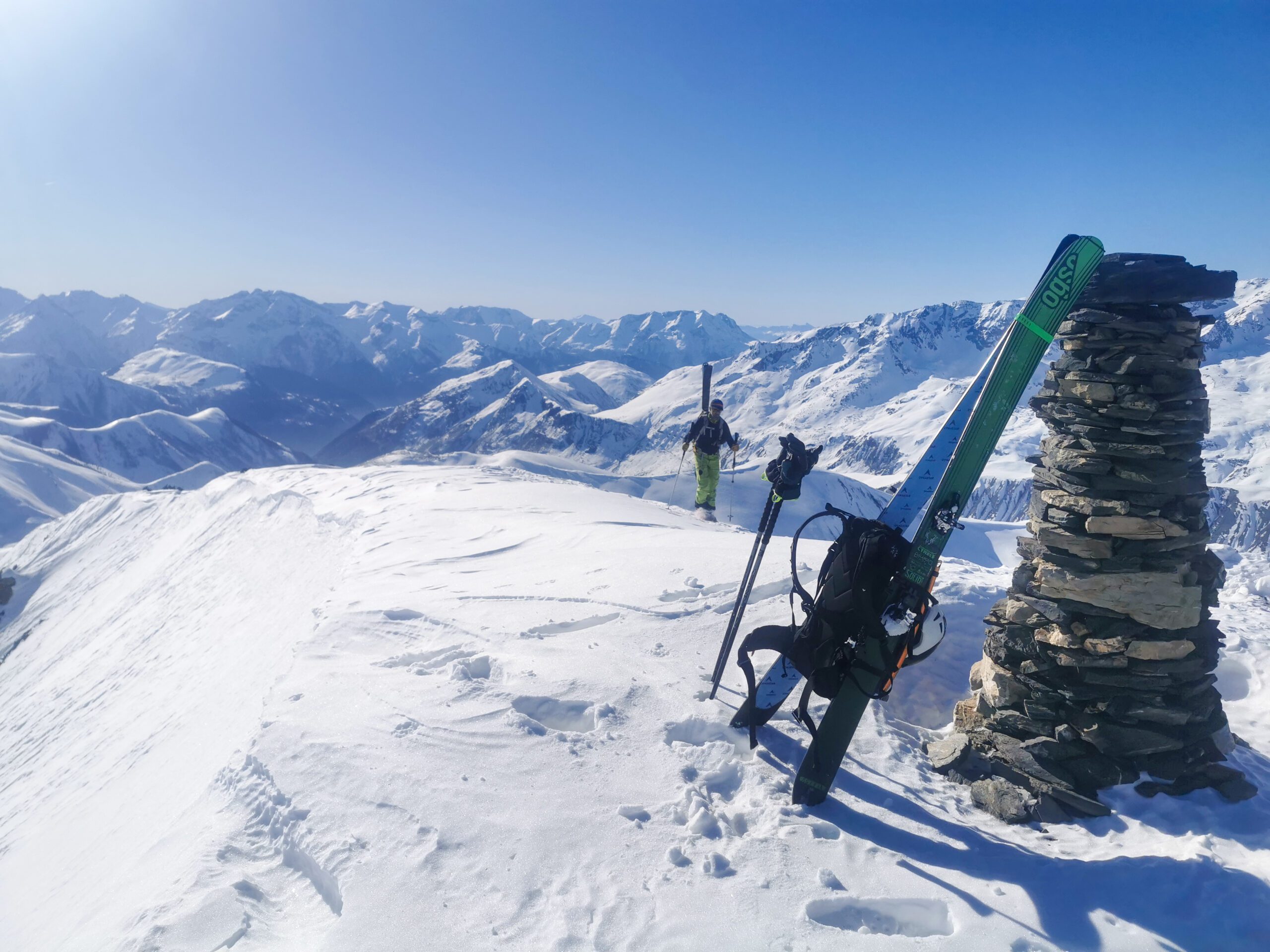For over 25 years, French mountain guide Cyril Dupeyré has trusted his instincts in the backcountry. The quiet voice in his head, shaped by decades of experience has helped him navigate risk, pressure, and terrain few dare to explore. But this past February, on a familiar glacier above La Grave, he made a different choice. The voice was there. He heard it. And for once, he didn’t listen.
What followed wasn’t a dramatic avalanche or a major headline. It was something quieter, but no less humbling. A reminder that instinct doesn’t shout. It nudges. And sometimes, one ignored nudge is all it takes to change a season.

Credit :Cyril Dupeyré
La Grave, February 27th.
It started like so many of our days there, a coffee at 8:30 with Lain and Douglas, then we’d head up. We’ve skied together for 12 years. They’re not just clients, they’ve become trusted ski partners and close friends. We’ve shared countless runs, some great objectives, and plenty of decision-making in big terrain. They trust me. I trust them.
But this season in La Grave was a little different. The téléphérique was out of order, a cable problem, so to reach the top of the ski terrain, we had to do a full detour: take a bus to Les 2 Alpes, navigate the entire lift system, and finally skin across the glacier to reach what we usually accessed in minutes. All that works for a single run. But we were up for it. We were motivated.
And we had our eyes on something special, the “Pan de Rideau.”
The “Pan” is one of La Grave’s classics, steep, committing, exposed. You reach it with a short skin, traverse across a hanging slope, then drop in above a rimaye and a crevassed glacier. I’d ridden it before. I knew the terrain. The avalanche bulletin called for a 3, but I was confident. We’d had 15 cm of fresh snow two days ago, and the weather looked stable.
By 11 a.m., we’d finally reached the top. It had taken a while, but the sky was holding. Some high clouds passed through. I suggested a warm-up run to test the snow and the visibility before we headed to the Pan. The slope was steep but non-exposed, a good way to ease into it. We started the traverse, and I broke the trail through 40 cm of light, dry snow. It felt stable. Everything pointed to go.

Credit :Cyril Dupeyré
But the closer we got, the more that feeling started to shift.
A cloud rolled in and parked itself above the summit. Visibility dropped suddenly, the light turned flat. I stood there, squinting into the white, and something inside me shifted.
Why can’t I recognize this slope?
Is this really the line I remember?
It’s steeper than I thought, or is it just the visibility?
Glaciers change. Every season, they melt and move, reshaping the terrain. Still, this felt unfamiliar. Off.
The little voice in my head got louder.
Are you sure about this? It’s early season. You haven’t been here yet this year.
The slope rolls over sharply. You can’t see the bottom.
Go too far left — there’s the serac wall. Too far right — a big crevasse.
But I knew there was about 50 meters of skiable space. I’d skied it before. Plenty of margin, in theory. Still…
Why does this feel so different today?
Why can’t I shake this tension?
I stood there, hesitating. I told myself it was normal, that even with experience, it’s okay to feel a bit tense before a 45° descent. I told myself it was just a warm-up.
I gave a final briefing to the group, kept it short. I was trying to stay calm, to stay in control, but I could feel the edge creeping in.
Come on. You’ve done steeper. You’ve done scarier.
This is fine.
Just ski it.
I dropped in.
The first turn was light and stable. The second was good.The third was still quiet.
Then the fourth.
I felt it, a push at my back.
Avalanche.
Not a big one. But I was moving. It took me forward. I fell, head-first, but my left ski stayed trapped under snow and as I twisted, I felt something tear. Then a sharp crack.
“Clac.”
Not normal. Not good.
Pain surged through my knee.
The slide took me through one rollover and came to a stop. I was at the bottom. Breathing. Alert. But the day was over. I didn’t need a doctor to tell me that.
I looked uphill, almost no debris. The slab had been shallow: 15 cm deep, 20 meters wide. Nothing dramatic. But it had been enough.
Anger came fast. At myself. At the voice I ignored. I screamed into the snow.
You knew.
You felt it.
And you didn’t listen.

Credit :Cyril Dupeyré
I knew Lain and Douglas were still up top. They wouldn’t ski down directly, it’s too risky, in case they triggered more. I dragged myself to the side of the slope, cleared a safe zone. They made their way toward me. I could see it in their eyes: worry, but no panic. We’ve been through enough together to know what to do.
They took my bag. We moved slowly, about 300 meters across to a sunlit flat. And just like that the cloud lifted. Blue skies. Clear view.
Almost cruel, really.
I called mountain rescue. The helicopter came quickly. At the hospital, the initial X-rays didn’t show much. But I knew it wasn’t good.
A few days later, the MRI gave me the full story: a torn ACL, torn meniscus, and a serious sprain of the MCL. No more skiing this season. Surgery followed. Now, rehab. I’ve got about 10 months off-snow.
I’ll be ready again next winter. My body will recover.
But more importantly, I’ll be listening again.
That voice, the one that speaks quietly but really without drama, is still with me. It has been my guide for 25 years. This was the first time I truly ignored it.
And it reminded me why I never should again.

